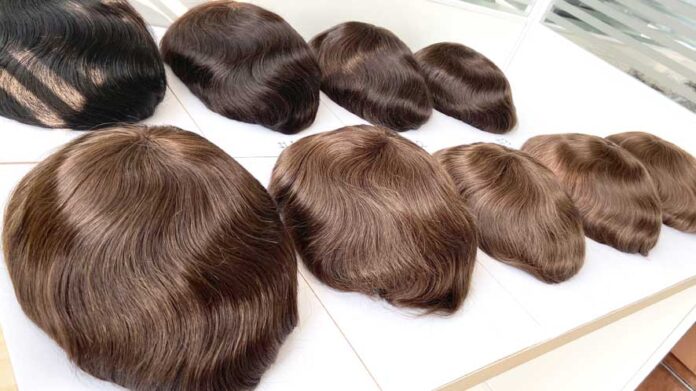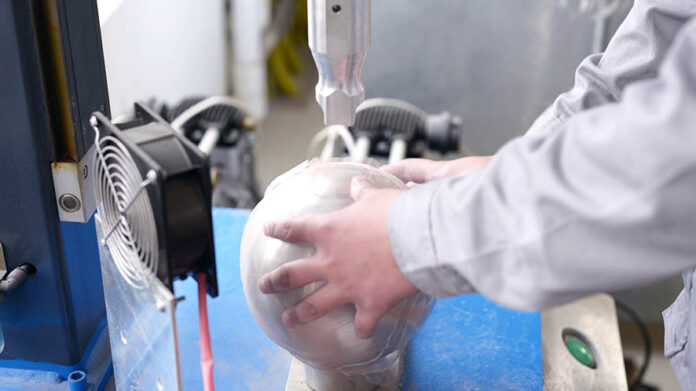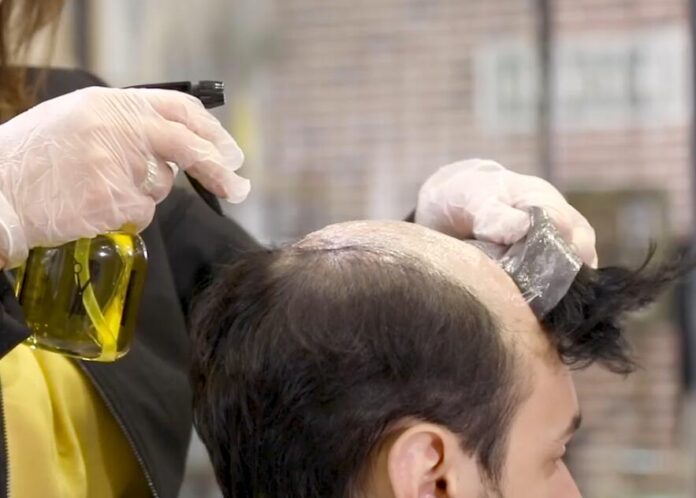Do you want a hairpiece that looks natural and will last through a variety of hairstyles and activities?
Learning the manufacturing process of men’s hairpieces gives you an understanding and appreciation for the intricate work that goes into their production. Discover how quality hairpieces are crafted and why they can last up to five years with proper care.
Types of Men’s Hair Pieces

Men’s hair pieces come in a variety of styles and colors and can be made from natural or synthetic materials. Depending on the style and purpose of the hairpiece, these choices can impact the manufacturing process.
Natural pieces are typically made from human hair and are designed to look like real growth in order to mimic your own current hairstyle. The most common type is a toupee, which usually consists solely of a single section of hair rather than full-head coverage. In addition to toupees, men’s wigs can also be purchased but are less commonly used due to their more obvious appearance relative to toupees.
Synthetic pieces offer a cheaper alternative to their natural counterparts as they use artificial materials such as nylon, rayon, or acrylic for the base weave instead of real hair. While these man-made fibers do not demonstrate the same level of realism as natural pieces, they still provide excellent full head coverage at an affordable price point for those with occasional thinning or baldness without being too visually obvious like wigs.
The Manufacturing Process

The production of men’s hairpieces is an intricate process that involves numerous steps. Depending upon the type of hairpiece, the length, and the style desired, as well as other factors, the manufacturing process may vary slightly from one supplier to another.
Generally speaking, however, the main steps to producing men’s hairpieces, like those at newtimeshair.com, involve cutting, shaping, styling, and dyeing or add-on techniques such as weaving or braiding.
First off is the selection of materials needed for production. Typically this includes coarse and fine human hairs for all types of hairpieces found in cuts ranging from short, medium to long styles. Then a fiber is selected based on texture preferences either silky straight for a smooth-looking finish or curly waves if a more natural look is preferred. Afterward, a model template is set up detailing specs such as dimensions including width, length, and circumferences to ensure uniform sizing when machined and cut into smaller components during production.
After the selection process, the next step in production is cutting and styling. The strands are aligned within marked lines to ensure uniformity before being cut according to the desired design using either high-speed machinery or hand-held tools like scissors. The particles are then sorted by circumference measurements and placed in predetermined bags. These smaller particles are later combined to create larger pieces, ensuring that the fibers remain aligned.
The pieces are then machine-stitched together, following pre-programmed directions that are built into the equipment controls. These directions are based on the pattern drawings sourced earlier in the production stages. Finally, heat press plates are used to reconnect the pieces at temperatures around 400 degrees Fahrenheit, or hotter if working with synthetic fibers.
The final step in hair production involves shaping the details. This is done by using chemical additions to make adjustments related to size and to achieve desired styling outcomes. For instance, to create wavy sea shapes beneath heated irons or to give organic curls, chemicals are used to provide various options.
These options range from subdued flocks to classic bald fades, undercut designs, and other popular styles that have gained popularity practically overnight. This process usually takes around 32 minutes and is done under temperatures exceeding 180 degrees. Finally, the head completion is sealed after every last stitch to ensure that the style holds and lasts as long as possible.
Quality Control and Assurance

To ensure that each product is up to the proper standards for its users, a series of tests is implemented throughout the manufacturing process. This includes testing for both physical and functional attributes, as well as virtually all other aspects of the item that may affect the customer’s experience with it.
At each stage of production (punching, combing, modeling, waxing, etc.), there are several tests performed to verify that the expected results were achieved and meet the required specifications.
These tests can include a visual inspection to identify discrepancies in material or workmanship; mechanical inspections such as dimensional assay or resistance measurement; and even simulations of applications such as heat-resistance tests or lifecycle testing. Such verification allows manufacturers to guarantee a certain level of quality when finished products are shipped out to customers.
Additionally, for recognized quality standards (for example international ISO 9000 series), a traceable Quality Management System may be necessary in order to ensure the manufacturer fulfills requirements in all phases from development through production and after-sales support. This system covers many additional areas including corrective action systems meant for identifying potential failure modes and defects before they can occur.
Maintenance and care

Depending on the type of hair you have chosen, there may be different cleaning guidelines that should be followed. Here are some tips to best care for your hair piece:
Natural:
- Shampoo and condition regularly with a gentle cleanser and conditioner specifically formulated for human hair.
- Regularly apply an intensive deep conditioning treatment such as hot oil, leave-in conditioner, or a deep mask.
- Neutralize odor with an appropriate shampoo for human hair extensions.
- Store in a cool, clean, and dry place away from extreme temperatures and away from direct sunlight if not worn.
Synthetic:
- Gently spot clean only when necessary by hand using lukewarm water (no higher than 85˚F) and a mild shampoo for synthetic fiber products.
- Allow to air dry naturally, do not use heated tools such as hairdryers or curling irons on synthetic pieces as they can melt or damage the fibers. If longer drying times are necessary use a fan but keep at least one foot away from pieces during this process.
- Gently brush with a wide tooth comb after cleaning to fluff up any loose fibers that may have flattened during washing.
- Be sure to store your men’s hair piece in its original packaging when not worn.
Conclusion
Men’s hair pieces have come a long way from their beginnings. The manufacturing process of such items is intricate and labor-intensive, with each step requiring specialized skill and expertise. From the concept to the creation, men’s hair pieces are works of art that take time, effort, knowledge, and dedication to produce.







